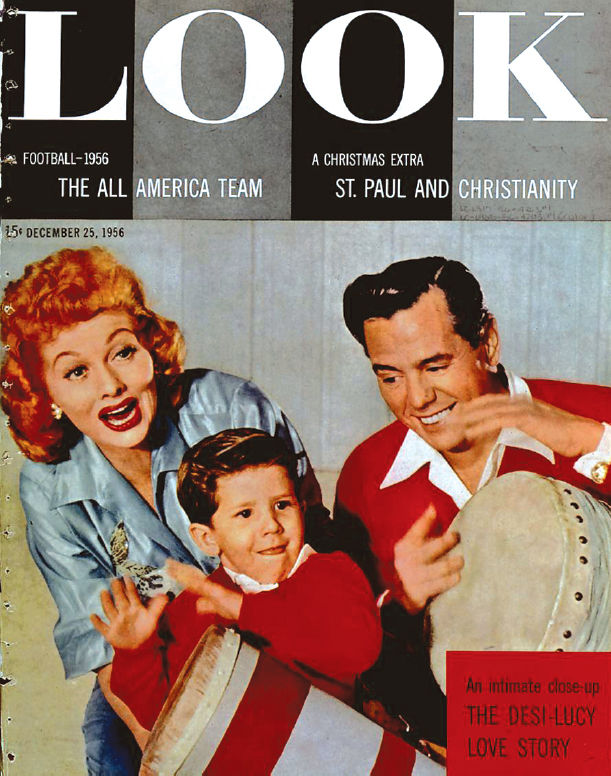General-Interest Magazines Decline
Printed Page 103
In the 1950s, weekly general-interest magazines began to lose circulation after dominating the industry for thirty years. Following years of struggle, the Saturday Evening Post finally folded in 1969; Look (another oversized pictorial weekly), in 1971; and Life, in 1972. All three at the time were in the Top 10 in paid circulation. Although some critics blamed the problem on poor management, general-interest magazines were victims of several forces—high production costs, increased postal rates, and television in particular. As families began spending more time gathered around their TVs instead of reading magazines, advertisers started spending more money on TV spots, which were less expensive than magazine ads and reached a larger audience.
While some of the most venerated general-interest magazines sputtered, new types of publications—notably TV Guide and People—cropped up to take advantage of Americans’ shifting preferences.
TV Guide
Launched in 1953 to exploit the nation’s growing fascination with television, TV Guide, which published TV program listings, took its cue from the pocket-size format of Reader’s Digest and the supermarket sales strategy used by women’s magazines. By filling a need (many newspapers were not yet listing TV programs), the magazine by 1962 had become the first weekly to reach a circulation of eight million. It had seventy regional editions. (See Table 4.1 for the circulation figures of the Top 10 U.S. magazines.)

When local newspapers began listing TV program schedules, they undermined TV Guide’s regional editions, and the magazine saw its circulation decline. But it has transformed itself to survive. Today, TV Guide is a full-size, single-edition, national magazine, having dropped its smaller digest format and its 140 regional editions in 2005. It now focuses on entertainment and lifestyle news and carries only limited listings of cable and network TV schedules. The brand name also lives on in the TV Guide Network, an on-screen cable and satellite TV program guide, and TVGuide.com.
People
People (launched by Time Inc. in March 1974) capitalized on the celebrity-crazy culture that accompanied the rise of television. And like TV Guide, it crafted a distribution strategy emphasizing supermarket sales. These moves helped it become the first successful mass-market magazine to be introduced in decades. With an abundance of celebrity profiles and human-interest stories, People showed a profit in just two years and reached a circulation of more than two million within five years. Instead of using a bulky oversized format and relying on subscriptions, People downsized and generated most of its circulation revenue from newsstand and supermarket sales. It also uses plenty of photos, and its articles are about one-third the length of those in a typical newsmagazine. People’s success has inspired the launching of other similar magazines specializing in celebrities, human-interest stories, and fashion, such as InStyle and Hello, and has influenced competing webzines like TMZ and Wonderwall.
| 1972 | 2011 | ||
| Rank/Publication | Circulation | Rank/Publication | Circulation |
| 1 Reader’s Digest | 17,825,661 | 1 AARP The Magazine | 22,407,421 |
| 2 TV Guide | 16,410,858 | 2 AARP Bulletin | 22,171,632 |
| 3 Woman’s Day | 8,191,731 | 3 Better Homes and Gardens | 7,617,844 |
| 4 Better Homes and Gardens | 7,996,050 | 4 gameinformer | 7,514,460 |
| 5 Family Circle | 7,889,587 | 5 Reader’s Digest | 5,560,046 |
| 6 McCall’s | 7,516,960 | 6 National Geographic | 4,480,788 |
| 7 National Geographic | 7,260,179 | 7 Good Housekeeping | 4,341,426 |
| 8 Ladies’ Home Journal | 7,014,251 | 8 Woman’s Day | 3,886,853 |
| 9 Playboy | 6,400,573 | 9 Family Circle | 3,872,671 |
| 10 Good Housekeeping | 5,801,446 | 10 People | 3,569,811 |
Source: Magazine Publishers of America, http://www.magazine.org, 2012.